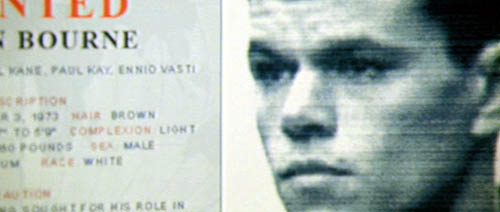 I love how author David Bordwell launches into a topic and digs deep. One of his terrific articles is "Unsteadicam Chronicles," from his website. I don't necessarily agree with his viewpoints, but I adore how deeply involved he gets with his material.
I love how author David Bordwell launches into a topic and digs deep. One of his terrific articles is "Unsteadicam Chronicles," from his website. I don't necessarily agree with his viewpoints, but I adore how deeply involved he gets with his material.Personally, I thought the camerawork and cinematography of "The Bourne Supremacy" was brilliant. (Unfortunately, I haven't seen "Ultimatum" yet.) Like J.J. Abrams' "Mission: Impossible III," the Paul Greengrass' Bourne films, as well as Doug Liman's original Bourne film, are point-of-view superspy films, and the camerawork reflects this. In these cases, I believe that the handheld work does not camouflage or hide shoddy staging, set design, or acting (as his article suggests). The camera is moving as fast as our hero spy, and sometimes the speed is so intense that makes a scene abstract. I'm thinking primarily of "Supremacy's" car chase, with frequent cutting to blurry, intense Bourne-point-of-view shots.
However, as a general rule, I think is it paramount for a filmmaker to set up the geography of an action scene so that the audience can follow along with the choreography.
James Cameron is the undisputed master of orchestrating complex action sequences that take place over large expanses of space, and yet the geography is expertly laid out for the audience, allowing the audience to fully enjoy the sequence (see "Terminator 2," "True Lies," "Titanic," and "Aliens"). The opposite is true of Michael Bay, whose style suggests that every single shot is a hero shot, and its context is irrelevant ("Transformers," "Bad Boys II," "Armageddon").
As you may have guessed, I have a few articles in the pipeline concerning this subject. We'll be examining the construction of an action sequence from Cameron's "True Lies," as well as a scene from Bay's "Transformers," to illustrate how to create (and destroy) an audiences' sense of geography for an action sequence.
- David Bordwell, Part I: "Unsteady Chronicles"
- David Bordwell, Part II: "Insert Your Favorite Bourne Pun Here"
- David Bordwell, Part III: "I Broke Everything New Again"









